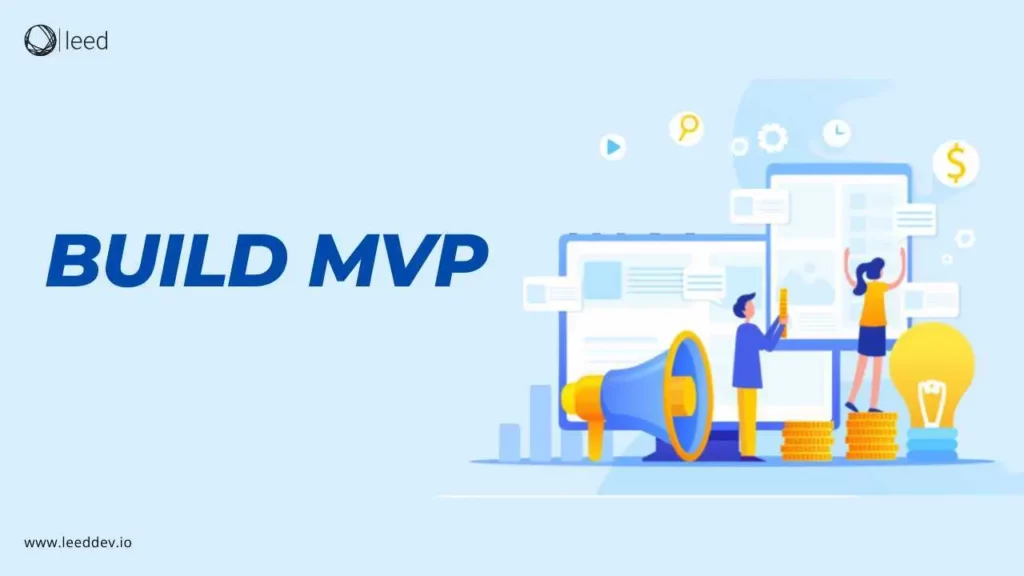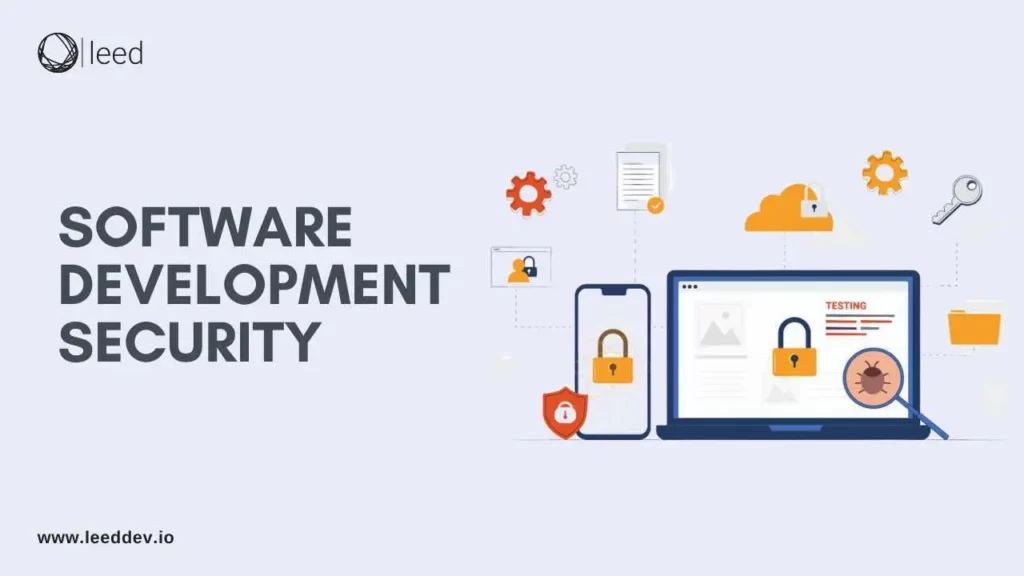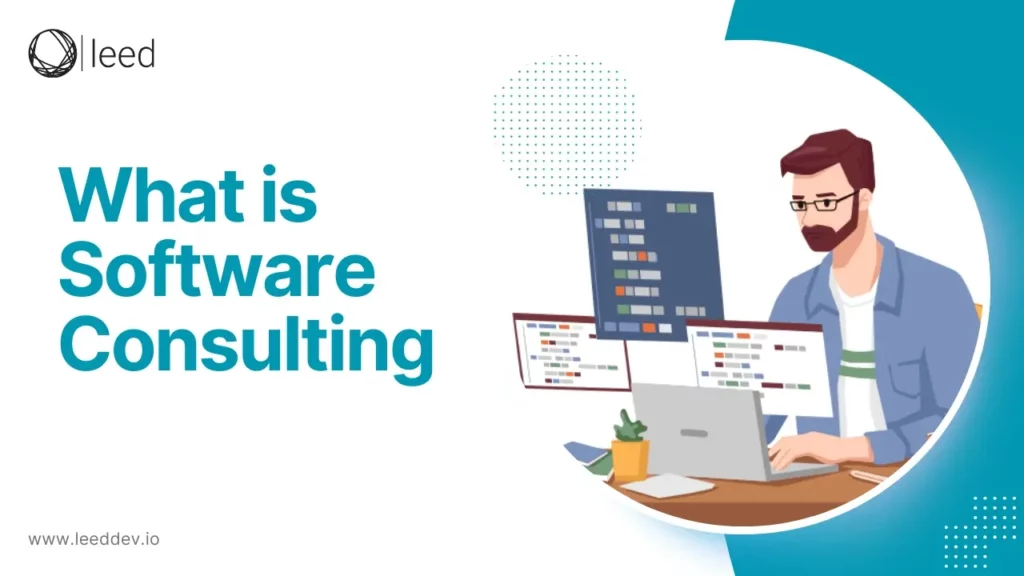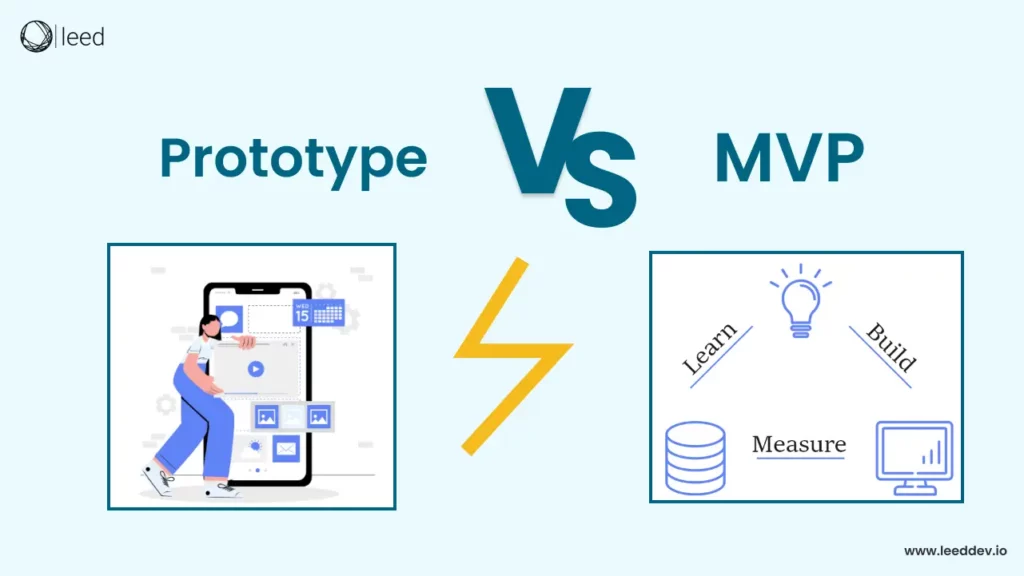What if the next big tech success starts with just a simple idea? That’s exactly how Dropbox, Twitter and even Amazon began by launching a Minimum Viable Product.
Instead of spending months or years building a full fledged product an MVP allows you to test and adapt with minimal risk. It’s the fastest way to validate your idea and avoid investing in something market doesn’t need.
Want to know how to build an MVP the right way? Let’s break it down step by step
What is an MVP?
Minimum Viable Product is simplest version of product released to test a business idea. It focuses on basic functionality to validate the concept with real users allowing businesses to learn from feedback before investing heavily in development.
Skateboard Car MVP Analogy
Henrik Kniberg’s skateboard car analogy is a helpful way to understand MVP development. It starts with simplest version of a product like a skateboard which serves the basic purpose of transportation. Over time the product evolves through stages which are scooter, bicycle, motorcycle and finally a car adding more features with each step.
Even at its most basic stage the skateboard provides value to users. The key takeaway is to start small, validate with real users, and improve gradually, ensuring value is delivered at each stage of development.
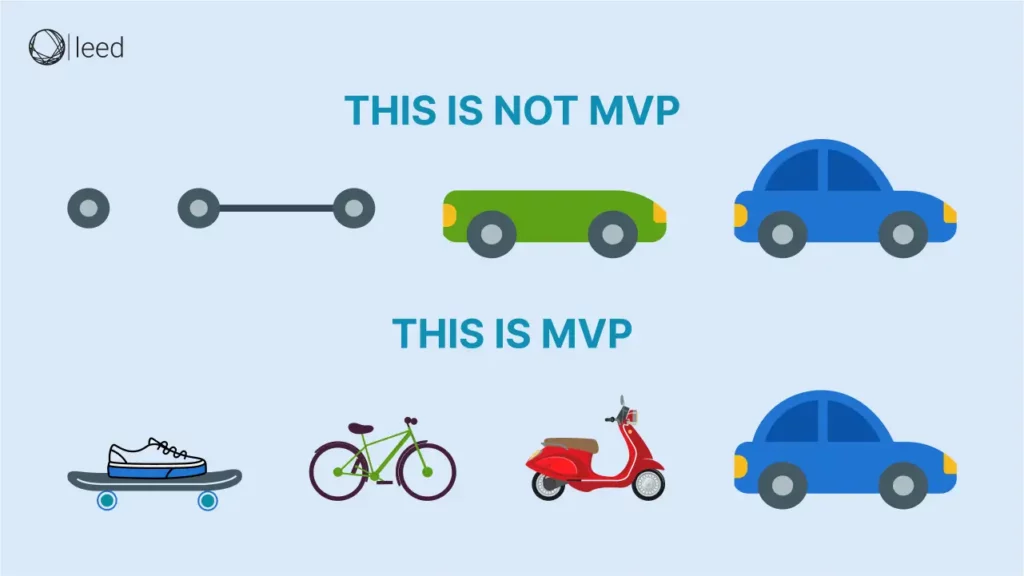
A Real MVP Success Story
No business wants to invest in a product only to find there’s no market for it. An MVP helps validate ideas before full development, saving time and money.
In 1999 Nick Swinmurn wanted to buy a pair of shoes but couldn’t find them in stores. Instead of guessing if people would buy shoes online, he built a simple website, uploaded shoe pictures from local stores and shipped them after getting orders.
His MVP proved the demand, leading to the creation of Zappos, which Amazon later acquired for $1.2 billion. An MVP allows businesses to test ideas with minimal risk. Start simple, validate demand, and scale from there!
How to Build an MVP?
Minimum Viable Product Development is strategic approach which focuses on testing an idea with minimal resources. Here’s a complete guide to building MVP effectively.
Define Your Ideal Customer
First step in MVP Application development is identifying target audience. Understanding who will use your product ensures that you create something that addresses customer needs. Consider:
- What sector does your product serve?
- Age, gender, income level, education, location
- Interests, values, lifestyle choices
- What problems does your product solve?
- How do they make purchasing decisions?
- When and how would they use your product?
A well-defined customer profile helps you build an MVP tailored to their preferences.
Clarify What Sets You Apart
To build a successful MVP start by clarifying what sets your product apart. Identify gaps in existing solutions and highlight what makes yours unique. Conduct market research to ensure there’s real demand for your product as many startups fail due to lack of market need.
Explore competitors, define target audience and assess market size to confirm that people are willing to pay for your product. Ask yourself key questions like:
- What problem does my product solve better than competitors?
- What features make my product unique?
- Who is my target audience?
- What is the market size?
- Are people willing to pay for this solution?
Set a Budget
Budgeting is crucial to ensure resource efficiency while developing an MVP. Start by estimating development costs including hiring developers and purchasing software tools. Do add design expenses such as UI/UX design and branding as well as marketing costs for promoting MVP.
Setting a budget for your MVP ensures efficient resource allocation and prevents overspending. Include key expenses such as:
- Market research
- Operational costs
- Development cost
- Marketing and promotion
- Design expenses
By planning these categories, you can maintain financial control and focus on creating a valuable MVP within budget.
Select a Time Frame
Setting a clear deadline for MVP development is essential to maintain focus and momentum. Define a realistic timeline that ensures all critical features are built without unnecessary delays. The key is to avoid overcomplicating the development process. Keep it simple and prioritize only the most essential functionalities. A structured timeline also allows for a smooth transition from development to user testing, ensuring timely feedback and adjustments.
Create MVP
An MVP is not just a rough prototype it is a functional product designed to test core assumptions with real users. It can take different forms:
- Basic Product Version: A simple app or website with core features.
- Landing Page: A webpage to gauge interest and collect sign-ups.
- Explainer Video: Showcases the product idea and attracts potential users.
- Concierge MVP: A manual version of the service before automation.
- Crowdfunding Campaign: Tests market demand while raising funds.
- Mockups & Wireframes: Visual representations to gather early feedback.
The goal is to test assumptions with minimal investment and adjust accordingly.
Get Feedback
Once the MVP is live collecting feedback from initial users is critical. Identifying user frustrations and preferences helps determine whether adjustments are needed to improve overall experience. The insights gathered from this step will shape the next phase of product development.
To gain valuable insights, ask the following questions:
- Why did you try our product instead of your current solution?
- Which features did you find most useful?
- Which features were least useful?
- Any difficulties or frustrations while using the product?
- What other products are you using?
- How does the product fit into your routine?
- How likely are you to recommend the product?
- What improvements or additional features would you suggest?
- What would make you stop using our product?
Iterate, Build or Abandon
After analyzing user feedback, there are three possible directions to take. If the feedback suggests room for improvement, iterate by refining the MVP and making necessary adjustments. If the product receives strong positive feedback consider building a full featured version. However if there is little to no interest in the MVP it may be necessary to pivot or abandon the idea altogether. The MVP process is all about learning and adapting quickly, ensuring that only the most viable ideas move forward.
Benefits of Building an MVP
Some of the main benefits of MVP are as follows:
Attract Investors
An MVP showcases your concept in action making it easier to gain investor interest. If users find value in your product your chances of securing funding increase significantly.
Build a Product People Want
Instead of guessing an MVP lets you gather real user feedback to refine your product. You focus on essential features, ensuring usability and demand.
Gain Industry Knowledge
Developing an MVP helps you explore market gaps, refine your idea and adapt to industry needs before committing to a full scale product.
Validate Your Idea Quickly
An MVP is a cost effective way to test your idea with minimal features. It saves time, resources and prevents costly mistakes.
Low-Risk Experimentation
With an MVP, you can easily integrate new technologies and add features over time. It’s a flexible approach that keeps your product evolving.
Reduce Development Costs
Building a full product from the start is expensive. Prioritizing core features helps cut costs, ensuring a faster return on investment.
Faster Time to Market
Instead of waiting months or years, MVP allows to launch quickly, secure your niche and gain early adopters.
Data-Driven Growth
User feedback from MVP helps you refine the product and make informed decisions about future features.
Early Marketing Advantage
Launching early builds brand awareness, attracts initial users, and helps shape your marketing strategy based on real feedback.
Higher Funding Potential
Investors prefer startups with proven traction. An MVP demonstrates market demand, making it easier to secure funding.
Real-World Examples of Successful MVPs
Here are some well known examples of successful MVP:
- Facebook (2004): Started as The Facebook, a basic social network for Harvard students. It allowed users to create profiles and connect before expanding to other universities.
- Airbnb (2007): The founders listed their apartment online and rented out air mattresses to test if people would pay for short term stays. This proved the demand for peer-to-peer rentals.
- Uber (2009): Launched as UberCab which is a simple app for booking black cars in San Francisco. It validated the idea of cashless ride-hailing before expanding.
- Dropbox (2007): Instead of building the product, they made a short demo video explaining cloud storage. Thousands signed up, proving interest before development.
- Twitter (2006): Originally Twttr, an internal tool for Odeo employees to share short updates. Its popularity led to a public launch as a microblogging platform.
- Spotify (2008): Started as a desktop app with limited free music streaming. The MVP tested demand and technical feasibility before securing major music licenses.
- Instagram (2010): Launched as Burbn, a location-based app with photo sharing. The team later simplified it to focus on images and filters, making it a hit.
Cost to Build an MVP
The average MVP development cost ranges from $25K to $50K depending on the product type and features.
Instead of focusing on a general cost, it’s better to break it down by development stages:
- Research & Prototyping: Runs parallel, usually within a month.
- Development: Costs vary based on features and complexity.
- Testing & Launch: Ensures functionality before market entry.
Mistakes to Avoid While Building MVP
Choosing Wrong Problem to Solve
Before you start building ensure the problem you’re solving is real and worth solving. Ask yourself:
- Who is the product for?
- What specific problem will it solve?
- Is your solution effective for that problem?
Focusing on wrong problem can lead to wasted time and resources.
Skipping the Prototype Phase
Prototype is a crucial step before full development. It helps to visualize how users will interact with product and allows you to refine the user experience. A prototype should be of Goldilocks quality not too basic or too detailed, but just enough to test and gather feedback.
Targeting the Wrong Segment of Persona
Focus on the correct target audience. Don’t rely on friends or family for feedback unless they represent your real users. The feedback from the wrong people can lead to misguided decisions. Validate your MVP with potential customers who will provide actionable insights.
Inappropriate Development Method
Choosing right development method is essential. Agile methodology is ideal for MVP because it focuses on iterative development and allows you to make quick changes based on feedback. The traditional Waterfall approach on the other hand can be rigid and slow.
Confusion Between Qualitative and Quantitative Feedback
Both types of feedback are important.
- Qualitative feedback provides insights into the product’s usability and user experience like what users like or dislike.
- Quantitative feedback gives you measurable data like success rates, number of errors.
Using both together will give you a full picture of how your MVP is performing.
Build Your MVP the Right Way
An MVP is your gateway to success allowing you to test ideas, gather feedback and refine your product before making a full-scale investment. By focusing on core features, real user validation and iterative improvements, you can minimize risks and maximize impact.
Build Your MVP with Leed Software Development, the best MVP Development Company!
Our expert team ensures a smooth MVP development process from ideation to launch helping you create a product that stands out. We provide the best MVP Development Services. Let’s bring your vision to life! Get in touch today!
FAQs
What is an MVP?
A Minimum Viable Product (MVP) is a basic version of a product with essential features to test market demand and gather user feedback.
Why should I build an MVP?
It helps validate your idea, reduce risks, attract investors, and ensure you’re building something users actually want.
How long does it take to develop an MVP?
Typically, MVP development takes 1 to 3 months, depending on complexity and features.
How much does it cost to build an MVP?
Costs range between $25K to $50K, based on features, design, and development requirements.
What are the key mistakes to avoid when building an MVP?
Solving the wrong problem
Skipping prototyping
Targeting the wrong audience
Choosing the wrong development method
Ignoring user feedback
What’s the best approach for MVP development?
The Agile approach is preferred as it allows for flexibility, quick iterations, and faster market adaptation.
Why choose Leed Software Development for MVP?
We offer expert guidance, efficient development, and a seamless process to bring your MVP to life quickly and effectively.

